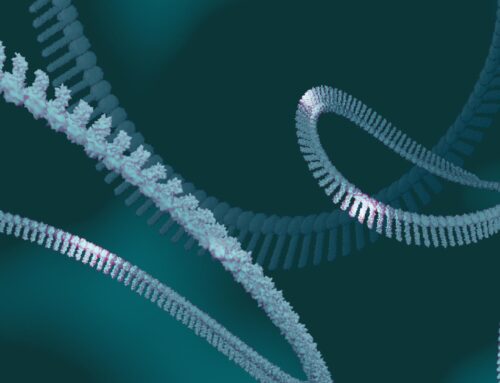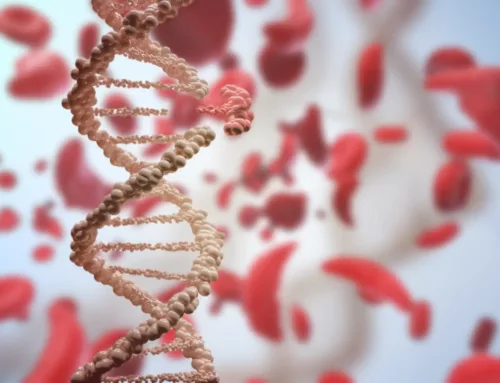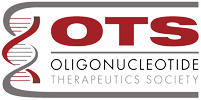Targeting ALS-FUS: Early Insights from the Jacifusen (ION363) Case Series

Amyotrophic lateral sclerosis (ALS) remains one of the most devastating diseases and is the most common motor disease among adults, affecting around 55,000 people in the US, Europe, and Japan. More than 40 genes have been linked to ALS, providing a valuable opportunity for targeted treatment. Among these, mutations in the FUS gene cause a particularly aggressive form of ALS, often affecting young patients, with rapid progression and poor outcomes. However, a recent study published in The Lancet by Neil Shneider and colleagues examines the safety and efficacy of an ASO therapy targeting FUS mutations.
From June 2019 to June 2023, 12 participants with ALS were recruited for an open-label, uncontrolled case series evaluating an ASO called jacifusen, also known as ulefnersen or ION363. All patients had a form of the disease known as fused in sarcoma (FUS) ALS, a rare subtype of the disease.
FUS-ALS: a disease with an early onset and rapid progression
Located on chromosome 16, FUS encodes a 526-amino acid RNA/DNA-binding protein and is involved in DNA repair, RNA processing, and stress granule formation. In FUS-ALS, mutations cause the mislocalization of the FUS protein from the nucleus to the cytoplasm, leading to the toxic accumulation of FUS proteins and the rapid and progressive loss of motor neurons in patients. Over 70 FUS mutations have been discovered, with some of the most common and severe being the P525L variant and truncating frameshift variants, which are associated with early-onset and rapid progression (1). While FUS-ALS is the third most common genetic cause of ALS, the subtype still only accounts for approximately 1-2% of all ALS cases and likely affects fewer than 1,000 people worldwide (1).
In contrast to sporadic ALS, which typically appears later in life, FUS-ALS presents at a younger age, often in the second to fourth decade of life, although juvenile onset cases can occur earlier than this, and has a far more aggressive disease course (1). While those with sporadic ALS usually have a survival rate of three to five years after becoming symptomatic, those with some FUS mutations have a survival timeframe of six months to three years after symptoms appear (1). Difficulty speaking, swallowing, muscle weakness, and rapid motor neuron degeneration are common signs of the disease, with cognitive impairment being less likely to occur than in other forms of ALS (1). However, prior to symptom onset, the only indication for some patients that they have FUS-ALS may be electrophysiological abnormalities detected during electromyography.
Jacifusen uses antisense oligonucleotide technology to target and silence FUS, thereby reducing the accumulation of toxic proteins in motor neurons. Previous mouse models have shown that jacifusen can efficiently silence FUS and delay neurodegeneration (2), and results of the recent case series appear to support these findings.
Results of the case series: slowed disease progression and improvement
In this multicenter case series, a total of 12 patients were treated through a series of individual-use, expanded-access investigational new drug applications on a compassionate-use basis. Based on the knowledge gained from treating prior participants, modifications to treatment protocols were made for subsequent participants.
Participants, who ranged in age from 16 years to 45, received a series of intrathecal injections of jacifusen (ION363) over several months to assess the drug’s safety and possible efficacy. The authors report that the therapy was generally well tolerated and appeared to slow or even reverse disease progression in some participants (1).
After six months of treatment, neurofilament light chain (NfL) levels in cerebrospinal fluid (CSF) — a marker of neuronal damage — decreased by up to 82.8%, “in contrast to natural history data, which show an initial rise during onset followed by stabilisation of NfL concentration in CSF, plasma, and serum during the untreated ALS disease course” (1). While most participants experienced continued functional decline, two participants stood out.
A young woman who started the therapy in late 2020 at the age of 16 initially experienced a decline in her disease during the first year of treatment, with her ALS Functional Rating Scale-Revised (ALSFRS-R) — a standard measure of disease severity — score dropping from 28 to 8 over 16 months. However, in the following year, her condition improved, and her score rose to around 20, where it has stayed through her most recent check-up. This recovery allowed her to regain abilities such as walking unaided and breathing without a ventilator, which she had previously lost due to the disease. Five years later, she is still alive and has outlived all other documented cases of individuals with this particular aggressive mutation (P565L) in the FUS gene following symptom onset (1). Possibly contributing to her exceptional response, the researchers state, is that she was treated earlier in her disease compared to other participants with the FUS variant, highlighting the importance of early intervention. Additionally, she was the youngest participant and had the lowest initial concentration of NfL in CSF, which subsequently dropped to a level comparable to that observed in controls.
“When testing new drugs for ALS, we do not expect to see clinical improvement,” Shneider said in a recent article. “What we’ve seen in one patient is really unprecedented functional recovery. It’s surprising and deeply motivating for us, the ALS research community, but also the community of ALS patients.”
While most participants started the therapy when their symptoms were already advanced, a man in his mid-30s with a family history of FUS-ALS, who had no ALS symptoms except for reduced electrical activity in his muscles — likely an early sign of disease onset — has remained symptom-free after three years and showed improved electrical activity in his muscles (1). Although the researchers said they cannot be certain how he would have progressed without treatment, his results suggest the possibility that jacifusen (ION363) could be used in carriers of pathogenic FUS variants to delay or prevent disease onset (1).
“These responses show that if we intervene early enough and go after the right target at the right time in the course of disease, it’s possible to not only slow disease progression, but actually reverse some of the functional losses,” explained Shneider. “It’s also a wonderful example of precision medicine and therapeutic development based on science and an understanding of the biology of disease.”
The treatment was generally well-tolerated; common adverse events included back pain, headache, nausea, and post-lumbar puncture headache. While two deaths occurred during the trial, they were unrelated to the drug, and no serious adverse events were attributed to jacifusen (1). Notably, there were no serious neurological adverse events, such as myelitis, radiculitis, aseptic meningitis, or papilledema, complications that have been reported with the FDA-approved ALS drug, tofersen.
Although most symptomatic patients in the series did not survive their aggressive disease, biochemical analysis of post-mortem frozen motor cortex tissue revealed that, for three of four participants, FUS protein levels decreased significantly (66–90%) compared with those in patients with untreated FUS-ALS (1). In two participants with the P525L variant, “FUS-P525L mutant protein levels were 3-4% of those in the three untreated controls with FUS-ALS carrying the same variant” (1). Immunohistochemical analysis of the motor cortex and spinal cord tissue showed reduced nuclear FUS staining and fewer pathological aggregates in treated participants compared to untreated patients (1).
“The progression of their disease slowed, and they lived a longer life as a consequence,” he said.
The findings provide sufficient data to demonstrate that the drug is safe and may have potential efficacy for treating FUS-ALS, enabling a Phase 1-3 clinical trial as the next step in its clinical development. The phase 3 FUSION trial of ION363 is a global, multicenter study in up to 95 patients. The first part of the trial will randomize patients to receive a multi-dose regimen of the therapy or a placebo for 60 weeks, followed by an open-label period in which all trial patients will receive ION363 for 84 weeks.
The role of NfL as a marker of clinical benefit
In ALS, growing evidence suggests that a drop in NfL levels in response to an investigational therapy can serve as a potential endpoint for predicting clinical benefit. However, the study notes that despite a significant decrease in NfL concentrations in CSF in most participants, several individuals continued to experience functional decline, raising questions about whether NfL decrease alone will ultimately predict degree of clinical outcome.
“Although a controlled trial with a larger sample size is necessary to definitively show the predictive value of NfL and efficacy of jacifusen in the context of patients with FUS-ALS the clinical and genetic complexity of our cohort offers insight into the relationship between NfL reduction and subsequent molecular, pathological, and functional evidence of recovery,” the study authors state, adding that factors including the pathogenicity of the specific FUS variant, age at disease onset and clinical status at the start of treatment as well as treatment duration all seem to influence clinical response following NfL reduction (1).
Limitations: sample size and no control group
The researchers note several limitations of the study, including that it’s a case series without a control group and has a small sample size with no strict inclusion or exclusion criteria beyond having FUS-related ALS or carrying an FUS variant and showing signs of preclinical disease (1). Many participants began the therapy at a later stage of their disease than would be typical for a controlled trial; however, the researchers state that this allowed them to include a larger spectrum of FUS-ALS participants (1).
A commentary on the study, also published in The Lancet, notes that the potential role of genetic modifiers in FUS or related genes, including chaperone genes that assist in correct protein folding, cannot be excluded when considering the previously mentioned young woman’s remarkable improvement.
“Identifying such modifiers could be crucial for predicting treatment responders in future studies,” the commentary states.
The story behind jacifusen
Six years ago, Ionis learned of Shneider’s efforts to develop a treatment for an Iowa woman with FUS-ALS, Jaci Hermstad, whose identical twin had died from ALS years earlier. Ionis partnered with him, sharing their research and expertise, which led to the development of an experimental therapy tailored for Jaci, dubbed “jacifusen.” Inspired by her bravery, Ionis decided that the best way to provide the drug to all patients who need it was to fund a clinical trial and get regulatory approval for the drug.
Other ASO Therapies for ALS
While Jacifusen aims to reduce the toxic FUS protein, other drugs are in the pipeline to treat other ALS-causing proteins. Tofersen (Qalsody) is an FDA-approved ASO for SOD1-ALS, which targets SOD1 mRNA to reduce its resulting toxic protein. During its VALOR trial, tofersen showed promising results, including slowed functional decline and reduced NfL levels, especially when administered early; it is currently considered a benchmark for ASO therapies treating ALS.
Additionally, Silence ALS, a new initiative created by Columbia University and the n-Lorem Foundation, is working to develop experimental personalized therapies to treat patients with rare genetic forms of ALS. Nine patients with CHCHD10 mutations and two with TARDBP mutations have been treated, with ongoing safety evaluations.
“Twenty years ago, we took a chance by funding research into antisense technology, which had never been applied to neurodegenerative diseases before. Now, we have not one but two ASO therapies that are changing the way we think about the future of ALS treatment,” said Dr. Kuldip Dave, senior vice president for research at the ALS Association, in a recent article. “We look forward to the results of the ongoing global phase 3 FUSION trial of jacifusen to see if they validate the potential demonstrated by this case series.”
While not conclusive, the jacifusen case series suggests cautious optimism that antisense technology could offer significant benefits in FUS-ALS, potentially altering the course of this devastating disease for future patients. Notably, the case of the young participant who demonstrated remarkable recovery highlights the potential benefits of early intervention. The results of the ongoing global trial will be vital in confirming whether this potential is realized.
References:
- Shneider NA, Harms MB, Korobeynikov VA, Rifai OM, Hoover BN, Harrington EA, Aziz-Zaman S, Singleton J, Jamil A, Madan VR, Lee I, Andrews JA, Smiley RM, Alam MM, Black LE, Shin M, Watts JK, Walk D, Newman D, Pascuzzi RM, Weber M, Neuwirth C, Da Cruz S, Soriano A, Lane R, Henry S, Mathews J, Jafar-Nejad P, Norris D, Rigo F, Brown RH, Miller S, Crean R, Bennett CF. Antisense oligonucleotide jacifusen for FUS-ALS: an investigator-initiated, multicentre, open-label case series. Lancet. 2025 Jun 7;405(10494):2075-2086. doi: 10.1016/S0140-6736(25)00513-6. Epub 2025 May 22. PMID: 40414239.
- Korobeynikov VA, Lyashchenko AK, Blanco-Redondo B, Jafar-Nejad P, Shneider NA. Antisense oligonucleotide silencing of FUS expression as a therapeutic approach in amyotrophic lateral sclerosis. Nat Med. 2022 Jan;28(1):104-116. doi: 10.1038/s41591-021-01615-z. Epub 2022 Jan 24. PMID: 35075293; PMCID: PMC8799464.
Disclaimer:
“The views, opinions, findings, and conclusions or recommendations expressed in these articles and highlights are strictly those of the author(s) and do not necessarily reflect the views of the Oligonucleotide Therapeutics Society (OTS). OTS takes no responsibility for any errors or omissions in, or for the correctness of, the information contained in these articles. The content of these articles is for the sole purpose of being informative and is not intended as an endorsement of any company, technology, or therapeutic that is mentioned. The content is not and should not be used or relied upon as medical, legal, financial, or other advice. Nothing contained on OTS websites or published articles/highlights is intended by OTS or its employees, affiliates, or information providers to be instructional for medical diagnosis or treatment. It should not be used in place of a visit, call, consultation, or the advice of your physician or other qualified health care provider. Always seek the advice of your physician or qualified health care provider promptly if you have any healthcare-related questions. You should never disregard medical advice or delay in seeking it because of something you have read on OTS or an affiliated site.”







